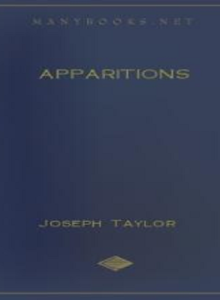Apparitions

Book Review: “Apparitions:
“Apparitions” is a very interesting compilation of traditional tales with supernatural conditions which were composed by Guy de Maupassant. These strange and rather enigmatic short stories are collected in this book, which is to make readers both happy and frightened. Regarded for his speculates and mainly mysteries, Maupassant ventures into the realm of the peculiar and fantastic a secret look into the unexplained.
The collection comprises short narratives, all of which are focused on hauntings. Maupassant is by no means verbose while the themes are subtle but are very much effective in translating the simplicity of the language into impact. He gradually develops suspense and this makes the reader wait in fear as to some event that is to soon occur.
The readers can note that in “Apparitions,” Maupassant has simply and beautifully combined reality with the supernatural. He has common people in his works leading normal lives suddenly coming across an encounter with the inexplicable. Such a combination of realistic and fantastic elements makes the stories realistic, which reinforces their plot. The locations are frequently villages, and the lack of large crowds in the films improves the mood of suspense.
Of all the stories in the book “The Horla” is perhaps one of the most fascinating. This story demonstrates one of the ways that Maupassant tried to explain the presence of a spirit. This protagonist has a feeling that there is something around him observing him but he cannot see or even describe it. The theme of the Work is fear, mental condition, the supernatural, or the idea of what lies behind the veil of darkness and the uncertainty that plagues people’s minds.
Yet another interesting story is “The Diary of a Madman”, in which the reader finds himself in the head of a man gradually going mad. In the course of so doing, the audience is privileged to see his viewpoint of the world and to evolve a terrifying conclusion from his viewpoint. Stories of ghosts for Maupassant are not only horrid novels of sorts, which also draw the readers into a world where different kinds of ghosts lurk, but they are mainly existential portrayals of how the mind works, or in other words, how fears work.
Also in his stories, Maupassant uses elements of surprise. It doesn’t mean that all of them are ordinary ghost stories: some of them are designed to make the reader expect one thing and then turn out to be quite different. This makes the reader confronted with a psychoanalytic experience from start to finish in this book.
But some people might feel the speed of some recollections is quite slow and not so cozy with modern horrors. A brief analysis shows that Maupassant’s writing style fits the 19th-century period in which he worked, and still, it may look today rather elaborate and contemplative. However, for people who like reading traditional literature and for those who like to pay much attention to the details, this part of writing makes the story even more eerie.
In its entirety, “Apparitions” may be regarded as a must-read work in cases of appreciating typical stories of ghosts together with other interested readers in fascination, derangement, and other supernatural feelings. Gloriously, Maupassant as a writer paints the picture of the seat of your pants by bringing suspense, mystery, and even some shade of psychological horror. This collection shows that fear comes not from the things that we encounter but rather; the things that we draw in our minds.
In his stories, Maupassant also has uses of surprise in his writing as well. None of them is a plain paranormal story; several seem to depict something in a certain way only to mislead the readers and provide a twist in the end. Such strategic writing maintains the interest of the reader right from the beginning through the middle and to the end of the book.
Nevertheless, there are certain reasons for the absence of such effects: some readers might think that the rhythm of some of the stories is slower, compared to today’s horror genre. Many aspects of the work that may seem unusual to a modern reader are mere consequences of the fact that the story was written by Maupassant in the 19th century, which means that his writing had some more time-anchored personal attitudes to than some works of his contemporaries or later writers. However, for the lovers of traditional literature and lovers of details, this prolongs and enriches the impression made by the horror of the book.
All in all, “Apparitions” will be enjoyed by the classics of ghost stories and by anyone wishing to enter a realm of fear, madness, and the supernatural. Louise Mailloux’s style of writing mystifies the audience and provides the right dose of suspense, mystery, and horror that is psychological more than physiological. This collection demonstrates that the greatest horror is not the horror one encounters every day, but the horror one imagines all on one’s own.


